Introduction
Dogs come in various shapes, sizes, and features, but one particularly charming characteristic that stands out is the curly tail. Whether tightly coiled or gently curled, these tails add a unique touch to the dog’s overall appearance.
Understanding different Dog Breeds with Curly Tails is not just about recognizing this physical trait; it also offers insights into the breed’s history, behavior, and care needs.
What Makes a Dog Breed Have a Curly Tail?
Genetics Behind Curly Tails: The curl in a dog’s tail is primarily due to genetics. The shape of a dog’s tail is determined by the structure of the vertebrae in the tailbone. In some breeds, the vertebrae are shaped in a way that causes the tail to curl. This genetic trait has been passed down through generations and is often linked to the dog’s overall body structure and breed history.
Physical Characteristics: In addition to genetics, other factors like muscle tone, the position of the tail, and how the tail is carried by the dog contribute to its curl. Breeds with curly tails often have a strong and flexible tail base, which allows the tail to maintain its curled shape naturally.
The Charm and Appeal of Dog Breeds with Curly Tails: Curly tails are not just a genetic quirk; they add a distinctive flair to a dog’s appearance, making these breeds stand out. Whether tightly coiled like a pig’s tail or loosely curled over the back, these tails often give the dog a more lively and spirited look, reflecting their playful and energetic personalities. The unique appeal of Dog Breeds with Curly Tails is undeniable, making them favorites among dog lovers who appreciate their distinctive and charming traits.
Why Choose a Dog Breed with a Curly Tail?
Temperament and Personality Traits: Many Dog Breeds with Curly Tails are known for their spirited and lively personalities. These dogs often exhibit a playful, confident demeanor, and their curled tails can be seen as a reflection of their upbeat nature. For example, breeds like the Shiba Inu and Pomeranian are not only adorable but are also known for their intelligence, loyalty, and independent streak. Their curly tails often wag with enthusiasm, adding to their charming and engaging personalities.
Benefits of Owning Dog Breeds with Curly Tails: Owning a dog with a curly tail can bring a unique joy to your household. These breeds are often visually striking, making them a conversation starter wherever you go. The curly tail also tends to stay cleaner compared to straight tails, which can sometimes drag on the ground, making grooming a bit easier. Additionally, the personality traits of many Dog Breeds with Curly Tails*—such as their alertness, loyalty, and affectionate nature—make them excellent companions for families, singles, and seniors alike. Their unique look combined with their delightful temperament makes these breeds a popular choice among dog lovers.
Top 10 Dog Breeds With Curly Tails in USA
1. Basenji: The Barkless Dog with a Curly Tail
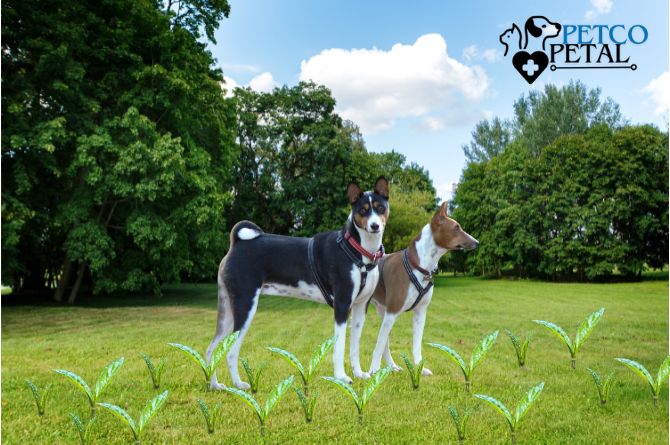
Overview of the Basenji Breed: Known as the “barkless dog,” the Basenji is an ancient breed originating from Central Africa. This small to medium-sized dog is intelligent, independent, and known for its cat-like grooming habits.
Highlight the Unique Curly Tail Feature: The Basenji’s curly tail is one of its most distinctive features. It curls tightly over the back, giving the breed a sleek and elegant appearance that complements its smooth coat.
2. Shiba Inu:The Spirited Dog with a Spiraled Tail

Introduction to the Shiba Inu: The Shiba Inu, a popular Japanese breed, is known for its spirited personality and fox-like appearance. This small-to-medium-sized dog is loyal, confident, and often reserved around strangers.
Discuss the Distinctive Curly Tail: The Shiba Inu’s tail is a key feature, typically curled tightly over its back in a sickle shape. The tail’s curl adds to the breed’s alert and poised stance, making it an iconic part of its look.
3. Pug: The Charming Companion with a Curled Tail
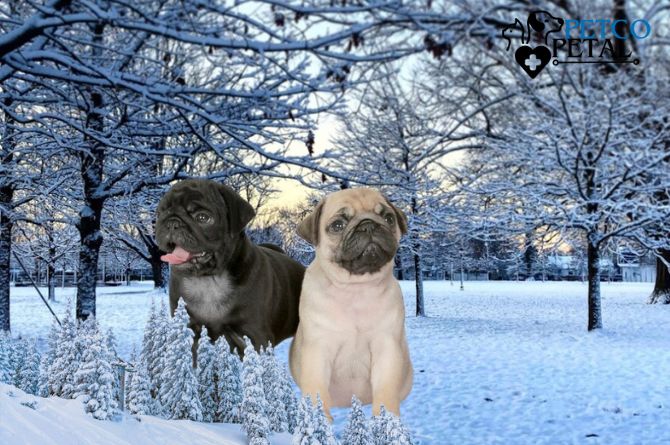
Details about the Pug Breed: Pugs are small, affectionate dogs with a lot of personalities packed into their compact bodies. They are known for their wrinkled faces, big eyes, and loveable nature, making them popular companions.
Emphasize the Curly Tail Aspect: A Pug’s tail is tightly curled, often forming a double curl, which is highly prized in the breed standard. This curled tail is a signature feature that adds to the Pug’s overall charm and appeal.
4. Akita: The Loyal Guardian with a Curled Tail

Introduction to the Akita: The Akita is a large, powerful dog breed from Japan, known for its loyalty, courage, and strong protective instincts. Akitas are often used as guard dogs and are deeply devoted to their families.
Description of Its Curled Tail: The Akita’s tail is thick and curls over its back, which is a characteristic trait of the breed. The curled tail, combined with the Akita’s robust physique, gives it a dignified and imposing presence.
5.Pomeranian: The Fluffy Friend with a Curly Tail
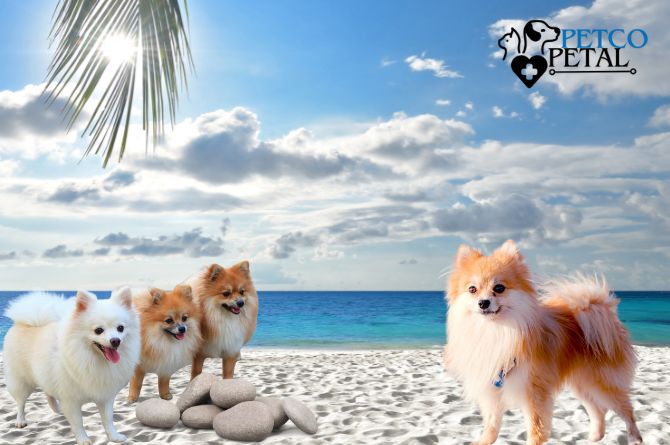
Characteristics of the Pomeranian Breed: Pomeranians are small, lively dogs known for their fluffy coats and big personalities. Despite their tiny size, they are confident, alert, and full of energy.
Focus on Its Curly Tail: The Pomeranian’s tail is one of its most charming features, curling over its back and often blending into its voluminous fur. This curled tail, along with its lively demeanor, makes the Pomeranian a standout breed.
6. Alaskan Malamute: The Strong-Sled Dog with a Curly Tail
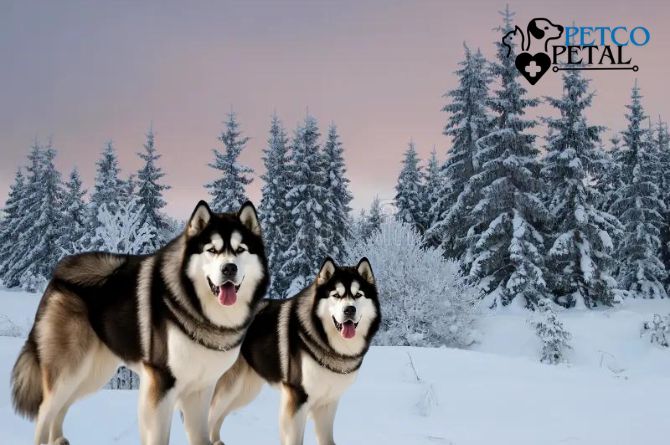
Overview of the Alaskan Malamute: The Alaskan Malamute is a large, strong breed originally bred for pulling heavy sleds across the snowy landscapes of Alaska. They are powerful, affectionate, and known for their endurance.
Discuss the Curled Tail Feature: The Alaskan Malamute’s tail is thick and curls over its back, especially when the dog is alert or excited. This curled tail is well-suited for the cold, as it can be used to cover the dog’s nose to keep it warm during rest.
7. Samoyed: The Smiling Dog with a Curled Tail
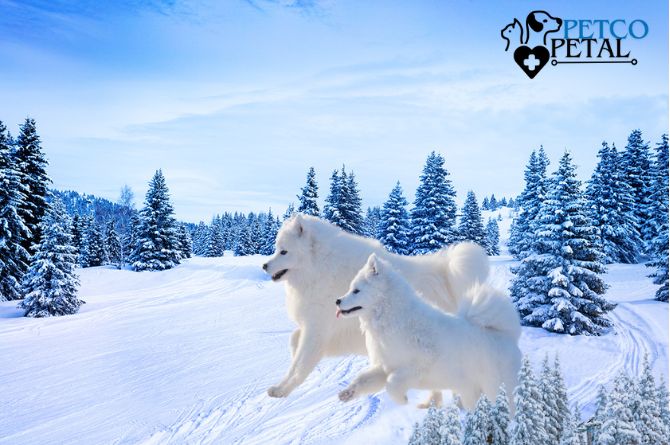
Introduction to the Samoyed Breed: The Samoyed is a friendly, gentle dog known for its “Sammy smile,” a result of its upturned mouth corners. This breed is highly social, making it a great family dog, and it has a rich history as a sled dog.
Highlight the Curly Tail Characteristic: The Samoyed’s tail is heavily furred and curls over its back, giving it a regal and fluffy appearance. This tail is not just attractive; it also serves a practical purpose in cold climates.
8. Chow Chow: The Lion-Like Dog with a Curly Tail

Details about the Chow Chow Breed: Chow Chows are medium to large-sized dogs known for their lion-like mane and unique blue-black tongues. They are independent, reserved, and known for their loyalty to their families.
Focus on Its Distinct Curly Tail: The Chow Chow’s tail is carried over its back in a tight curl, adding to its majestic and dignified look. This curly tail is a hallmark of the breed and complements its thick, plush coat.
9. Finnish Spitz: The Vocal Dog with a Curly Tail

Introduction to the Finnish Spitz: The Finnish Spitz is a small to medium-sized breed known for its fox-like appearance and distinctive vocalizations, often referred to as the “barking bird dog” in Finland.
Discuss Its Curled Tail Feature: The Finnish Spitz’s tail is bushy and curls over its back, forming a striking plume. This curled tail adds to the breed’s lively and alert appearance, making it a popular choice for those who love active and vocal dogs.
10. Keeshond: The Friendly Dog with a Curly Tail
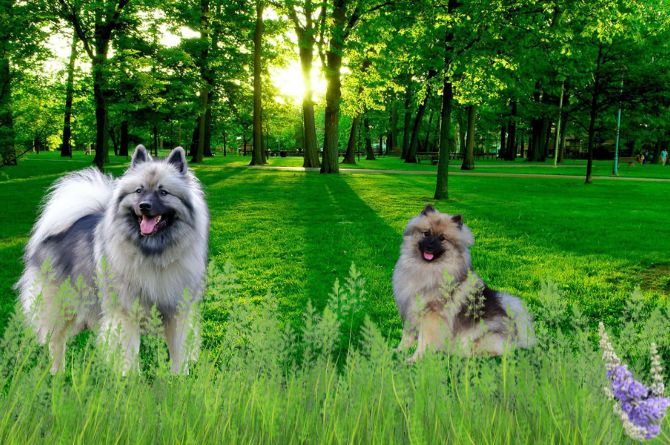
Overview of the Keeshond Breed: The Keeshond is a medium-sized dog known for its friendly demeanor and “spectacles”—markings and shading around its eyes that give it an expressive look. They are social, affectionate, and great with families.
Emphasize the Curly Tail: The Keeshond’s tail is another key feature, curling tightly over its back and covered in thick fur. This curled tail, combined with the Keeshond’s plush coat, gives the breed its signature fluffy and endearing appearance.
How to Care for Dog Breeds With Curly Tails
Grooming Tips Specific to Dog Breeds With Curly Tails:
Tail Hygiene: Curly tails, especially those that rest on the dog’s back, can trap dirt and debris more easily than straight tails. Regularly clean the tail area to prevent any buildup of dirt or bacteria, which can lead to irritation or infection.
Brushing: For breeds with thick, curly tails, such as the Pomeranian or Samoyed, frequent brushing is essential to prevent matting and tangles. Use a slicker brush or a comb designed for long fur to keep the tail looking neat and healthy.
Bathing: When bathing curly-tailed dogs, pay extra attention to the tail area. Ensure that the tail is thoroughly rinsed to avoid any soap residue, which could cause skin irritation.
Nail Care: Since many Dog Breeds with Curly Tails are active and lively, keeping their nails trimmed is important to prevent discomfort or injury while they play or run.
Health Considerations for Curly-Tailed Dogs:
Tail Injuries: Curly tails, particularly those that are tightly curled, can be prone to injuries if not handled carefully. Be gentle when grooming or playing with your dog to avoid accidentally causing pain or damage to the tail.
Spinal Health: Some curly-tailed breeds, such as the Pug or French Bulldog, may be prone to spinal issues due to their body structure. Regular check-ups with a veterinarian can help detect and manage any potential problems early on.
Skin Folds and Infections: Breeds with tightly curled tails may have skin folds that can trap moisture, leading to infections or irritation. Keep the tail area dry and clean, and consult your vet if you notice any signs of discomfort or redness.
Weight Management: Maintaining a healthy weight is crucial for curly-tailed dogs, especially for breeds like the Pug or Akita. Excess weight can put additional strain on their spine and joints, potentially exacerbating any existing health issues. Regular exercise and a balanced diet are key to keeping these breeds healthy and happy.
Conclusion
Recap of the Top 10 Dog Breeds With Curly Tails:
To summarize, we’ve explored the diverse and fascinating world of Dog Breeds with Curly Tails. From the elegant Basenji to the fluffy Pomeranian, each breed has its unique charm and personality that makes them stand out. Whether it’s the spirited Shiba Inu or the majestic Samoyed, these breeds not only captivate with their curled tails but also with their distinct characteristics and temperaments.
Final Thoughts on Why These Breeds Are Unique and Popular in the USA:
Dog Breeds with Curly Tails are celebrated not just for their distinctive appearance but also for the qualities that make them excellent companions. Their curly tails often reflect their lively, confident nature, making them popular choices for families, singles, and seniors alike. In the USA, these breeds have found a special place in the hearts of many dog lovers, thanks to their unique look, loyal disposition, and the joy they bring to their owners. Whether you’re drawn to the loyalty of the Akita or the playful nature of the Pug, each of these breeds offers something special that enhances the bond between dog and owner.
FAQs about Dog Breeds With Curly Tails
1: Why do some dogs have curly tails?
Answer: Curly tails in dogs are usually the result of specific genetic traits. The shape of a dog’s tail is influenced by the curvature of the tail vertebrae. Breeds that have been selectively bred for certain physical characteristics, such as Dog Breeds with Curly Tails, often retain this trait due to its appeal and association with certain breed standards.
2: Are curly-tailed dogs more prone to health issues?
Answer: While most Dog Breeds with Curly Tails are healthy, some may be predisposed to spinal or tail-related issues, especially if their tails are tightly curled. It’s important to monitor their health and consult a veterinarian if any discomfort or abnormal behavior is observed.
3: How should I groom a dog with a curly tail?
Answer: Grooming Dog Breeds with Curly Tails involves regular brushing, especially for breeds with thick or long fur. Keep the tail clean and free of debris, and ensure that any skin folds near the tail are dry to prevent infections.
4: Do curly-tailed dogs have different temperaments?
Answer: While a curly tail is a physical trait, some Dog Breeds with Curly Tails also exhibit certain personality traits, such as being energetic, alert, or loyal. However, temperament can vary widely between breeds and individual dogs, so it’s important to consider the specific breed’s characteristics.
5: Can curly tails indicate a dog’s mood?
Answer: Yes, the position and movement of a curly tail can often reflect a dog’s mood. For example, a curled tail held high might indicate confidence or excitement, while a tail that is curled but lowered might show relaxation or submission. Observing a Dog Breed with a Curly Tail can give you insights into how the dog is feeling at any given moment.

